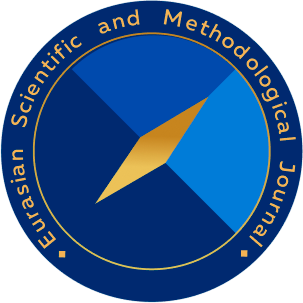A scientific article – a presentation of one's own conclusions and intermediate or final results of a scientific research, experimental or analytical activity, containing developments by the author, conclusions, recommendations not previously published and possessing novelty; or dedicated to the examination of previously published scientific articles related to a common theme (systematic review).
Articles are submitted in electronic format (in formats like doc, docx, rtf). The author’s surname is indicated in the filename (if there are co-authors, the surname of the first author is used).
Font – Times New Toman, font size – 12, alignment – justified, spacing – single, paragraph – 1cm, margins top and bottom – 2cm, left – 3m, right – 1cm.
Tables, diagrams, and figures are presented in a format that allows for formatting (necessary for translation), for example: Figure 1. Title. Table 1. Title. The number of tables and figures should not exceed 20% of the total volume of the presented article.
Requirements for the structural elements of the article:
- IRSTI (Interstate Rubricator of Scientific and Technical Information) - in the language of the article;
- Article title (centred in uppercase bold font) - in the language of the article;
- Authors’ initials and surnames (in italics, in lowercase) - in the language of the article - the corresponding author is indicated with an asterisk "*";
- Affiliation, city, country (in the language of the article);
- Email address;
- Abstract (in the language of the article) of no less than 100 words and no more than 300 words;
- Keywords/phrases - 5-10 words/phrases - intended for searching the article's content and determining its subject area;
- The article text is formatted according to IMRAD: introduction (significance, scientific relevance, research objectives), main sections (materials and methods, results, discussion), and conclusion (conclusions) - all structural elements are highlighted in bold font;
- Information about funding (if applicable);
- The list of references (used sources) is provided as sources are cited in the text, with sequential numbering in square brackets. All electronic resources are accompanied by hyperlinks and the date of access. The use of automatic page-based links is not allowed. The list should contain no fewer than 15 sources, with 10-15 sources (at least 70%) from the last 3-5 years, including from the Scopus and Web of Science databases;
- References (sources transliterated using the translit-online program);
- Abstracts in two other languages (for example: if the article is in Kazakh, provide an abstract in Russian and an abstract in English).
The article length (excluding IRSTI, title, author information, abstracts, keywords, and references) should be at least 2500 words and should not exceed 5,000 words. The number of tables and figures (including charts and diagrams) should not exceed 20% of the total article length, to avoid surpassing the established limit of 200-250 pages in one issue.
In each original article (excluding social and humanitarian topics), the reproducibility of research results is ensured. The research methodology is described, including the origin of equipment and materials, methods of statistical data analysis, and other means of ensuring reproducibility. If necessary, the editorial board has the right to make abbreviations and changes without author approval.
